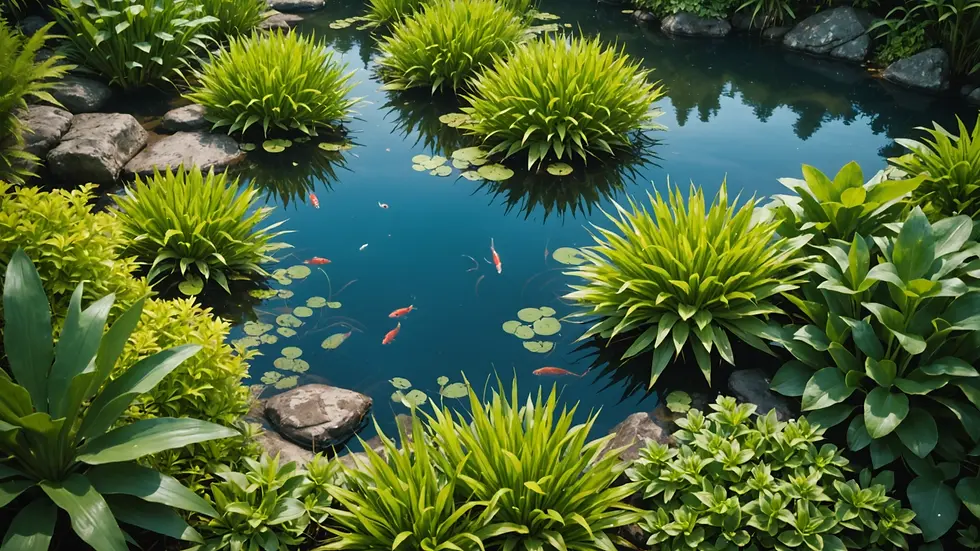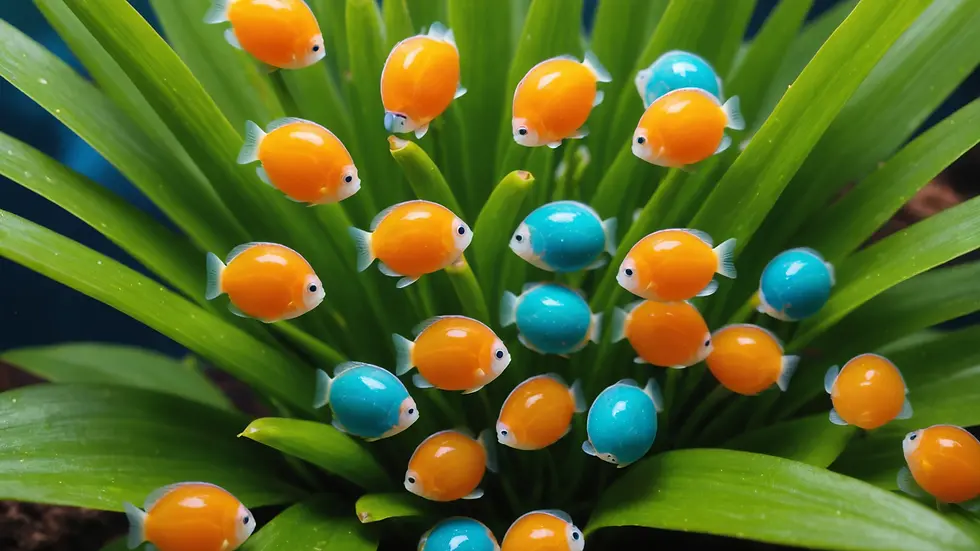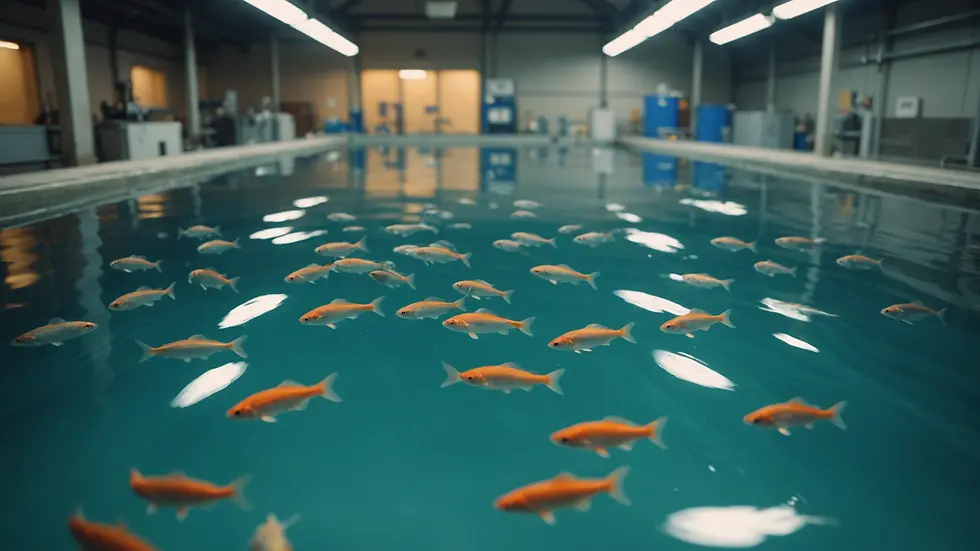Deciphering the Enigmatic Rhythms of Fish Breeding Cycles
- Jyotiraj Borah
- Feb 6
- 4 min read
Understanding the breeding cycles of fish is vital for both casual hobbyists and professional aquarists, as well as those involved in managing fisheries. Fish breeding often seems complicated due to the unique traits of different species and the impact of environmental factors. This blog will break down the complexities of fish breeding cycles, showing their importance for maintaining thriving aquatic ecosystems.
The Importance of Breeding Cycles in Aquatic Ecosystems
Breeding cycles play a key role in fish population sustainability and the overall health of aquatic ecosystems. Each fish species has its own breeding traits shaped by factors like temperature, daylight hours, and food availability. A solid grasp of these cycles enables more effective fish population management and supports biodiversity.
For example, a study showed that fish populations in specific regions can decrease by up to 60% if breeding cycles are disrupted due to overfishing or environmental changes. By aligning fishing practices with these cycles, fisheries can manage their catch more responsibly. In aquaculture, understanding when fish spawn can also lead to better production practices, ultimately benefiting the industry.
Factors Influencing Fish Breeding
Environmental Cues
Fish are sensitive to their environment, and various factors influence their breeding cycles.
Temperature: Most fish have preferred temperature ranges that trigger spawning. For instance, Atlantic cod typically begin to spawn when water temperatures reach 6-8°C.
Photoperiod: The length of daylight can influence breeding behaviors. Species like the European perch depend on specific light patterns, which help regulate their internal clocks.
Water Quality: Parameter levels, including pH and dissolved oxygen, are critical for reproductive health. For instance, trout thrive in oxygen-rich waters, with just 5 mg/l of oxygen being necessary for optimal breeding conditions.

Species-Specific Traits
Different fish species exhibit unique breeding strategies and cycles:
Oviparous Fish: Most fish, like salmon and tilapia, lay eggs that need external fertilization. The salmon undergoes a lengthy migration to suitable spawning grounds, often traveling hundreds of miles.
Viviparous Fish: Species such as guppies give birth to live young. Their breeding cycles can occur year-round, as internal factors may be more influential than environmental changes.
Seasonal Breeders: Many fish, like catfish, spawn during specific seasons (typically late spring or summer). Some species can spawn more frequently if conditions remain stable.
Spawning Behaviors
Courtship Rituals
Fish engage in diverse courtship behaviors leading up to spawning. These rituals can be fascinating:
Display Colors: Males may change color or develop features to attract females. For example, male bettas brighten in color to signal readiness to mate.
Nest Building: Species like bluegill sunfish prepare nests from sand or gravel. The presence of well-constructed nests often influences female choice, ensuring higher offspring survival.
Social Structures: In species such as clownfish, dominant males have better chances of mating within their social groups.
Fertilization and Egg Development
Once mating is successful, fertilization happens.
External Fertilization: Most fish release eggs and sperm simultaneously into the water. For example, a single female salmon can lay up to 5,000 eggs, significantly increasing the chances of fertilization in a suitable habitat.
Nesting and Guarding: Parental care varies. In some species like tilapia, one parent guards the fertilized eggs until they hatch—a practice that boosts survival rates.
Incubation: Depending on species, egg development can take from 2 days (like guppies) to several weeks (like salmon).

Challenges to Successful Breeding
Habitat Alterations
Human activity can significantly impact fish breeding habitats.
Pollution: Contaminants lower water quality, which can cause declines in fish reproduction rates. For example, heavy metals in water have been shown to reduce egg viability by nearly 40%.
Overfishing: Unsustainable fishing can disrupt breeding populations, leading to population declines. Some areas have reported decreases of over 50% in certain species due to overfishing practices.
Habitat Loss: Changes in land use, such as urban development or dam construction, harm critical breeding grounds.
Disease and Parasites
Diseases and parasites can disrupt breeding success.
Infections: Populations affected by diseases may have reduced health and lower reproductive success, leading to declines in offspring.
Parasite Infestation: Infestations can lower the capacity for reproduction—certain parasites can reduce fertility rates by up to 25%.
Managing Breeding in Aquaculture
Practices in aquaculture must balance fish production with sustainable breeding methods.
Selective Breeding: By enhancing traits like disease resistance, aquaculture can improve yields while preserving genetic diversity. For example, farms that practice selective breeding see a 20% increase in fish output.
Environmental Control: Systems that recycle water allow better quality control, mimicking natural conditions that support breeding.
Egg and Fry Care: Creating a suitable environment for hatching and nurturing young fish is crucial. Effective feeding strategies can also minimize stress and lead to healthier populations.

Appreciating the Complexity of Fish Breeding Cycles
Understanding fish breeding cycles is vital for maintaining healthy populations and ecosystems. By grasping the environmental triggers for spawning, the unique traits of different species, and the challenges they face, aquarists and fisheries managers can greatly contribute to aquatic sustainability.
Taking steps to reduce human impacts and adopting best practices in aquaculture are essential to ensure thriving fish populations for future generations. Appreciating these cycles allows us to connect with aquatic life and highlights our responsibility in preserving their habitats.
Through ongoing exploration of these complex rhythms, we can enhance our knowledge of fish reproduction, leading to better decisions that benefit both fish and ecosystems alike.




コメント